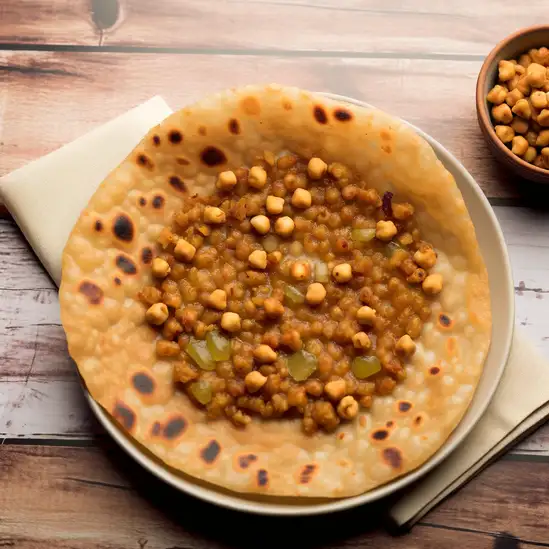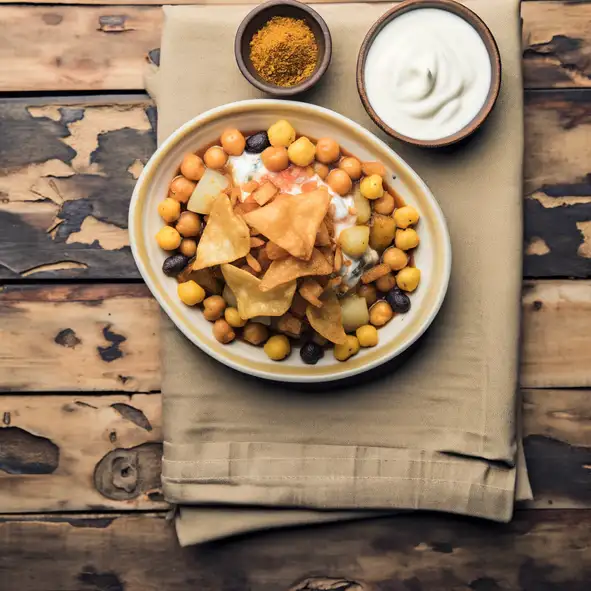



If you ever find yourself wandering through the heart of India,Khajuraho is one of those places that quietly pulls you in with its timeless charm and a whisper of ancient stories. The moment you step into this town,there’s a gentle hum in the air—a mix of history,spirituality,and artistry that feels almost alive. The sun casts a golden glow on the sandstone temples,making their intricate carvings dance with shadows,and you can’t help but run your fingers along the cool,weathered stone,tracing the delicate sculptures that tell tales of love,life,and celebration. Walking through the temple complex,you hear the soft murmur of visitors and the occasional call of a bird overhead,but mostly,there’s a peaceful stillness that invites you to slow down and soak it all in. The scent of blooming marigolds from nearby markets mingles with the earthy aroma of the surrounding forests,creating a sensory tapestry that feels both grounding and uplifting. At sunset,the temples glow with a warm,amber light,and local musicians sometimes play traditional tunes nearby,adding a soulful soundtrack to the scene. What makes Khajuraho truly special is how it captures a moment in time when art,spirituality,and human expression were intertwined so beautifully. The city’s character is unpretentious yet deeply rich,with friendly locals eager to share stories or a cup of chai. It’s not just about seeing the temples—it’s about feeling the pulse of a culture that celebrates life in all its forms,leaving you inspired long after you’ve left.
The information on this page is currently being reviewed by Tripkliq and should be used as a guide only
Eng word: Hello
Eng pronunciation: Namaste
Local language: नमस्ते
Eng word: Goodbye
Eng pronunciation: Alvida
Local language: अलविदा
Eng word: Thank you
Eng pronunciation: Dhanyavaad
Local language: धन्यवाद
Eng word: How much
Eng pronunciation: Kitna
Local language: कितना
Eng word: Toilet
Eng pronunciation: Shauchalay
Local language: शौचालय
Eng word: Help me
Eng pronunciation: Meri madad karo
Local language: मेरी मदद करो
Eng word: Yes
Eng pronunciation: Haan
Local language: हाँ
Eng word: No
Eng pronunciation: Nahi
Local language: नहीं
Eng word: Excuse me
Eng pronunciation: Maaf kijiye
Local language: माफ़ कीजिये
The Khajuraho Group of Monuments was designated as a UNESCO World Heritage Site in 1986, acknowledging its outstanding universal value and preserving its rich cultural heritage for future generations.
Khajuraho is renowned for its unique architectural style that combines elements of both Hindu and Jain religions, reflecting the tolerance and syncretic ethos of the times.
Among the intricate carvings that adorn the temples, the erotic sculptures of Khajuraho are perhaps the most famous, symbolizing moksha or liberation and depicting the everyday life of the people, including their beliefs and desires.
The monuments were built between 950 and 1050 AD by the Chandela dynasty rulers, which is considered a golden period of Central Indian art and architecture.
Out of the original 85 temples believed to have been constructed, only about 25 have survived the ravages of time and are well-preserved in the present day, a testament to their architectural brilliance.
The Kandariya Mahadeva Temple, dedicated to Lord Shiva, is the largest and most ornate Hindu temple in the Khajuraho complex, standing at about 31 meters high and beautifully showcasing medieval Indian architecture.
The stone carvings in Khajuraho are renowned for their intricacy and detail, depicting various aspects of life, including martial arts, music, dance, and other cultural activities, along with the spiritual themes.
Khajuraho is known for organizing the Khajuraho Dance Festival annually, attracting performers and tourists from all over the world to witness classical Indian dances set against the backdrop of the temples.
The Khajuraho group of monuments was largely forgotten and was consumed by the surrounding jungle until the British surveyor T.S. Burt rediscovered them in 1838, bringing them to the attention of the world.
In Khajuraho Group of Monuments, the most common Power Adaptor is Type C, Type D.



A fragrant rice dish cooked with marinated meat or vegetables, Biryani is a favorite in Khajuraho, often flavored with saffron and served with raita.

A sweet flatbread stuffed with a mixture of jaggery and lentils, Puran Poli is a popular dish during festivals and special occasions.

A deep-fried pastry filled with spiced potatoes and peas, Samosas are a beloved snack in Khajuraho, often served with tamarind chutney.

A refreshing yogurt-based drink, Lassi can be sweet or salty and is a perfect accompaniment to the spicy dishes of the region.

A popular street food, Chaat in Khajuraho includes a variety of savory snacks, often made with potatoes, chickpeas, and tangy chutneys, topped with yogurt and spices.

Khajuraho offers a variety of kebabs, including seekh and shami kebabs, made from minced meat and spices, grilled to perfection.

A traditional dish from Madhya Pradesh, Dal Bafla consists of wheat dough balls that are boiled and then baked, served with a rich lentil curry and ghee.
Imagine stepping into a city that pulses with energy,where every street corner hums with life and stories waiting to be discovered—that’s Mumbai for you. The moment you arrive,you’re wrapped in a vibrant tapestry of sounds:the rhythmic clatter of local trains,the lively chatter of street vendors,and the distant call of temple bells blending with honking rickshaws. The air carries a mix of spices from roadside stalls,mingling with the salty breeze from the Arabian Sea,creating an intoxicating scent that’s uniquely Mumbai.
Walking through its bustling lanes,you’ll see a kaleidoscope of colors—bright saris fluttering in the wind,intricate colonial architecture standing proudly beside sleek skyscrapers,and street art that tells tales of the city’s soul. Mumbai’s character is a beautiful contradiction:it’s fast-paced yet welcoming,chaotic yet deeply rooted in tradition. The city’s heartbeat is its people—dreamers,artists,and entrepreneurs who wear their resilience and warmth like a badge of honor.
And then there’s the food—oh,the food! From the tangy,spicy street-side vada pav that feels like a warm hug,to the rich,aromatic biryanis and fresh seafood by the sea,every bite is a celebration of flavors. Mumbai invites you to lose yourself in its maze of neighborhoods,each with its own rhythm and charm,promising moments of surprise and connection. It’s not just a place to visit; it’s a city that stays with you long after you’ve left.
Kochi,also known as Cochin,is a coastal city in Kerala renowned for its backwaters,Chinese fishing nets,and nearby islands like Willingdon Island and Vypin Island,making it a popular tourist destination.
ExploreImagine stepping into a place where the sun kisses your skin,the salty breeze carries the laughter of beachside chatter,and every corner hums with a laid-back yet vibrant energy—that’s North Goa for you. It’s a lively patchwork of golden sands,swaying palms,and colorful shacks where the aroma of sizzling seafood mingles with the faint scent of frangipani flowers. Whether you’re wandering through the bustling markets of Anjuna or watching the sun dip behind the waves at Calangute,there’s a rhythm here that feels both timeless and alive.
What really makes North Goa special is its blend of cultures and carefree spirit. You’ll find Portuguese-influenced architecture standing proudly alongside lively street art,while the music—from mellow acoustic sets to pulsing electronic beats—drifts through the air,inviting you to join in. The locals,warm and welcoming,add a genuine charm that makes you feel like you’re part of a big,sun-soaked family.
And the flavors! Freshly caught fish grilled with spices that tease your taste buds,tangy Goan curries,and sweet,creamy feni that’s perfect for toasting to new adventures. As night falls,the beach transforms into a playground of bonfires and music,where stories flow as freely as the ocean breeze. North Goa isn’t just a destination; it’s a feeling—a place that stays with you long after you’ve left.
If you ever find yourself craving a place where the ocean breeze carries stories of adventure and the rhythm of waves sets your pace,Port Blair is where you want to be. This city feels like a gentle invitation to slow down and soak in the raw beauty of island life. The moment you step off the ferry or plane,the salty air mingled with the scent of tropical flowers wraps around you like a warm hug. Palm trees sway lazily against a backdrop of turquoise waters,and the chatter of locals blends with the distant call of seabirds,creating a soundtrack that’s both lively and soothing.
Port Blair isn’t just a gateway to the Andaman Islands; it’s a place where history whispers through the walls of the Cellular Jail,a somber yet inspiring reminder of India’s past. But beyond its historical weight,the city pulses with a laid-back charm—colorful markets burst with fresh seafood,exotic fruits,and spices that tease your senses. Grab a plate of freshly caught fish grilled with local herbs,and you’ll taste the ocean’s essence in every bite.
What makes Port Blair truly special is its blend of cultures and the warmth of its people. You’ll find a mix of indigenous traditions and influences from across India,all coexisting in a relaxed,welcoming vibe. Whether you’re wandering along Corbyn’s Cove Beach at sunset or chatting with fishermen mending their nets,there’s a genuine friendliness here that makes you feel like you belong. It’s a place that invites you to explore,reflect,and simply be.
If you step into Chennai,you’ll immediately feel a pulse that’s both ancient and alive—like the city is breathing stories through its streets. It’s a place where the salty breeze from the Bay of Bengal mingles with the rich aroma of jasmine flowers and sizzling street food. The soundscape is a lively mix of temple bells,the rhythmic clatter of auto-rickshaws,and the distant hum of Carnatic music drifting from open windows. Chennai doesn’t rush; it invites you to slow down and soak in its layered rhythms.
Walking through the neighborhoods,you’ll see a fascinating blend of colonial architecture standing shoulder to shoulder with colorful markets bursting with fresh produce,spices,and vibrant textiles. The city’s heart beats strongest in its people—warm,proud,and deeply rooted in tradition yet open to the world. Festivals here aren’t just events; they’re immersive experiences where you can witness centuries-old rituals,dance,and music that feel like a living tapestry.
And then there’s the food—oh,the food! Imagine biting into a crispy,golden dosa,its tangy chutneys and spicy sambar awakening your senses. Or savoring a steaming bowl of filter coffee that’s as bold and comforting as the city itself. Chennai’s charm lies in these everyday moments,where history,culture,and life blend seamlessly. If you want a city that feels like a warm embrace and a lively conversation all at once,Chennai is waiting with open arms.
Pondicherry,a former French colony,is famous for its charming streets,beaches,and nearby islands like Paradise Island,offering a tranquil escape for travelers.
ExploreScammers may sell counterfeit tickets to the monuments, which are not valid for entry.
Tourists are taken to 'authentic' handicraft workshops where they are pressured into buying overpriced items that are often mass-produced.
Unlicensed individuals posing as official guides offer their services, often providing inaccurate or misleading information about the monuments.
Local vendors may charge exorbitant prices for souvenirs, especially if they sense that the tourist is unfamiliar with local pricing.
Some locals may demand money for taking photos of them or their property, even if no prior agreement was made.
Scammers posing as priests or temple staff may pressure tourists into making 'mandatory' donations for blessings or rituals, which are not legitimate.
Auto-rickshaw drivers may quote inflated prices for short distances, especially if tourists are unaware of standard fares.
Tourists may be coaxed into performing unnecessary religious rituals or ceremonies, often with a hefty fee attached.
The use, possession, and distribution of drugs are strictly prohibited in India. The country has stringent anti-drug laws, and violations can result in severe penalties, including imprisonment. Tourists should avoid any involvement with drugs to ensure a safe and trouble-free visit.
Smoking is generally prohibited in public places in India, including tourist sites like the Khajuraho Group of Monuments. There are designated smoking areas where you can smoke, but it is advisable to avoid smoking in non-designated areas to respect local regulations and cultural sensitivities.
Vaping is subject to similar regulations as smoking in India. It is not allowed in public places, including historical and cultural sites like the Khajuraho Group of Monuments. Tourists should use designated smoking areas if they need to vape.
What are other people saying about Khajuraho Group of Monuments?
Recent Social posts about Khajuraho Group of Monuments
There is nothing to show you for now.